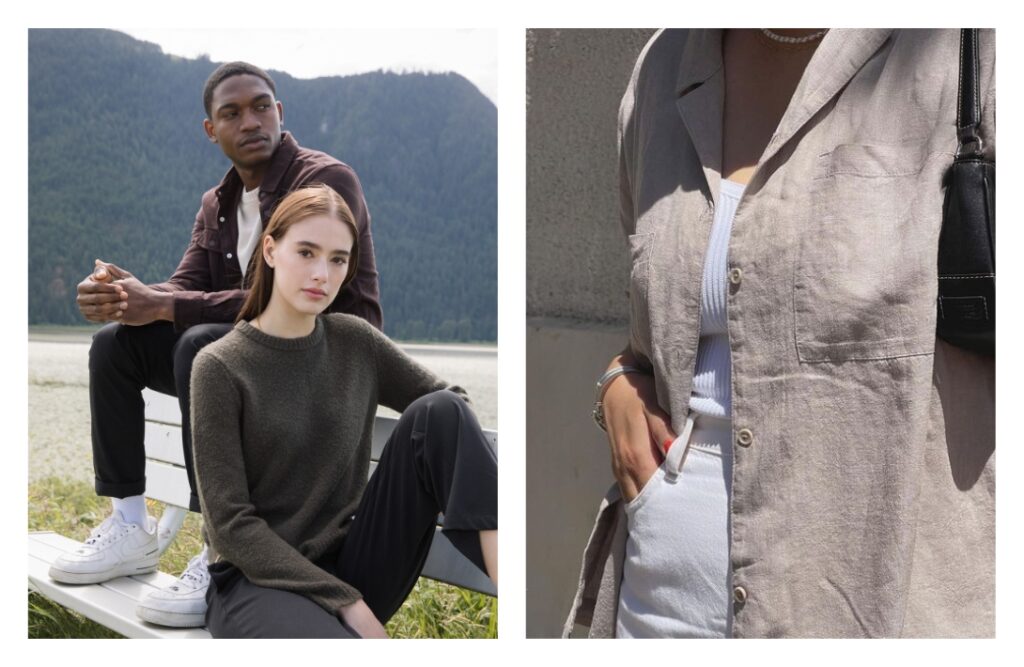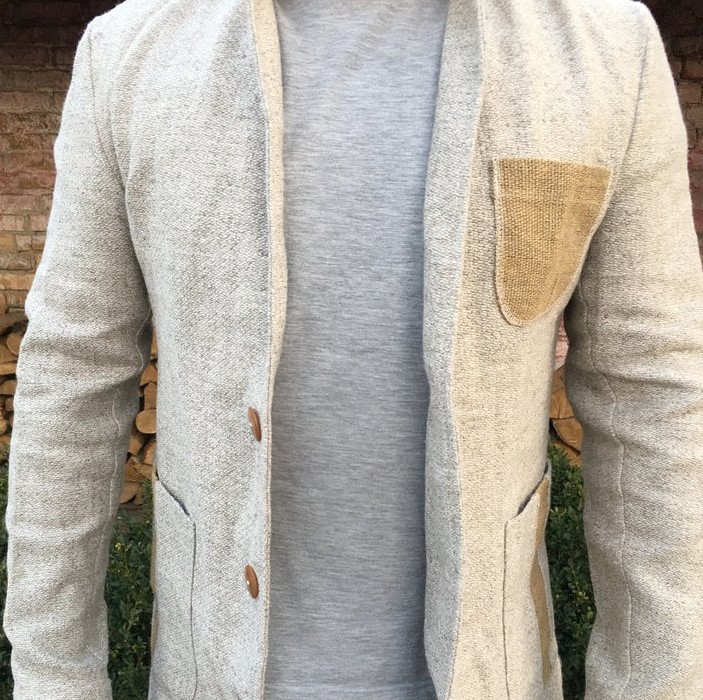Best Ideas For Selecting Hemp Clothes
Wiki Article
Why Is Hemp More Durable, Regenerative, And More Biodegradable Than Cotton?
Hemp is considered more biodegradable due to its inherent properties and the way hemp grows. Here's why- Biodegradability-
Natural FiberNatural Fiber Hemp is a plant that naturally produces fiber, and its fibers can be biodegradable. Clothing and textiles made from hemp are broken down with time. The waste is returned to the earth with no lasting negative effects. It is a stark contrast to synthetic fibers such as polyester, which take many years to break down.
Hemp textiles don't typically contain chemical treatments or additives that can inhibit biodegradability. Some cotton textiles are, however could have been treated with synthetic chemicals, such as dyes and finishes that can delay biodegradation.
Durability-
Hemp fibers are known for their strength and durability. Hemp textiles and clothing are more durable than cotton, making them last longer. This makes hemp clothing can endure many washes and wear cycles, before developing signs of deterioration.
Hemp fabrics are less prone to pilling which results in the formation of tiny, fuzzy balls that form on the surface of the fabric. This is a characteristic that helps to improve their overall quality and longevity.
Regenerative Agriculture-
Soil Health - Hemp cultivation is regenerative when it is done in a sustainable manner. Hemp is a plant with roots that are deep, which can prevent compaction and soil erosion. It also helps improve soil health by increasing the aeration and microbes' activity. This regenerative element could leave the soil in a better state for future crops.
Low environmental impact Sustainable hemp cultivation methods require the use of a minimal amount of pesticides. The cultivation of cotton is a traditional method that may cause soil degradation as well as water pollution, among other environmental problems due to chemical use in synthetic forms.
Water Efficiency-
Low Water Requirements Hemp generally requires less water than cotton growth. Hemp's drought-resistant properties permit it to flourish under conditions with minimal irrigation or rainfall. It is a water-efficient option in particular for areas with limited resources.
Crop Rotation- Hemp can be integrated in crop rotation systems that can enhance the overall health of soils and decrease the risk of soil depletion and the buildup of disease. In cotton farming that is conventional Crop rotation is more rare.
Hemp's versatility allows it to be used in many different applications including textiles, clothing, paper and building materials. Hemp cultivation is a flexible crop that can be used to support a variety of industries using eco-friendly and sustainable methods.
Apart from the benefits of hemp, it's essential to be aware that both hemp and cotton can be grown sustainable (or not) according to the farming techniques and processing methods. Selecting hemp products that were manufactured using environmentally friendly and ethical practices can maximize its environmental advantages. Organic cotton products are an effective way to lessen the environmental impact of conventional cotton. See the recommended hemp clothing examples for site advice including hemp clothing for men, hemp jeans, hemp pants womens, hoodlamb jacket, 100 hemp shirt, hoodlamb jacket, hemp sportswear, hemp underwear, organic hemp clothing, mens hemp trousers and more.

What Is It That Gives Hemp Fibres Its Breathable, Moisture-Wicking And Thermoregulatory Characteristics?
Hemp fibers have distinct chemical and structural properties that makes them air-tight. They also have moisture-wicking properties. These properties are due to the following factors- Microscopical Structure- Hemp has a porous and hollow structure, which permits air circulation throughout the fibers. Hemp textiles are highly breathable because of their natural porosity. This structure is woven into fabric to allow air to pass through. This promotes ventilation and prevents heat and moisture from accumulating on the skin.
Wicking and Moisture Absorption- Hemp fibers are hydrophilic and have a strong affinity for water and can absorb moisture readily. The hemp fibers absorb sweat, moisture, and help to prevent feeling like your skin is damp. Hemp fibers can also draw the body of moisture by dispersing the moisture over a large surface area, which allows it to evaporate faster. The properties of hemp that wick moisture away make you feel dry and comfortable during exercise or during hot weather.
Hemp fibres have natural insulation properties. In cold weather, they can keep heat in close proximity to your body, allowing warmth. In hot temperatures, they aid to cool you down by permitting excess heat and moisture to be able to escape. Its inherent thermoregulatory abilities allow hemp clothing to be suitable for a variety of temperatures.
Hemp fibers have natural antimicrobial properties that aid in preventing the growth of bacteria that cause odor. This is a factor in the freshness and resistance to the odor of hemp clothing in time of training.
Hemp clothes are durable and lasts for a long time. It is able to be worn and washed repeatedly without losing its breathability and the ability to remove moisture. The durability of hemp clothing increases its lifespan, reducing the requirement to replace it and reducing the negative impact on the environment.
UV Protection Hemp fibers protect the skin against harmful ultraviolet radiation. Hemp clothing can be used for a variety of purposes due to its UV blocking properties. It's perfect for activities outdoors.
It is crucial to understand that these qualities are inherently found in hemp fibers. They do not depend on chemical treatment or other additives. Hemp's natural characteristics allow it to be an eco-friendly and comfortable choice for clothing, particularly for activewear, outdoor apparel and warm-weather clothes. Furthermore, these characteristics remain even after hemp fibers are processed and weaved into textiles, making them highly desirable for sustainable and practical clothes. See the best hemp clothes for more tips including hemp clothing near me, patagonia iron forge jacket, hemp jeans, hemp tank top, hemp and cotton fabric, hemp shorts patagonia, hemp tees wholesale, hemp polo shirts, hemp clothing near me, hemp apparel fabric and more.

What Are The Benefits Of Bamboo Clothing For Comfort And The Environment?
Bamboo clothing can be both eco-friendly and comfortable.
Bamboo fabric is known for its softness. It's smooth and silky to the touch, which makes it a comfortable skin. A lot of people find bamboo clothing extremely soft making it a preferred option for intimate clothing such as loungewear, activewear, and loungewear.
Bamboo fibers are known for their ability to draw moisture away and they are breathable. The micro-gaps in the fabric allow air to flow to keep you cool and cool during hot weather. The moisture-wicking properties help to remove sweat from the skin and decrease the sensation of dampness.
Bamboo clothing exhibits excellent thermoregulation characteristics. The clothing can keep you warm by capturing the body heat. In hot temperatures, bamboo clothes can keep you cool by allowing moisture and heat to escape. Bamboo can adjust to a variety of temperatures, it's suitable for all seasons.
Hypoallergenic- Fabric made from bamboo is gentle and hypoallergenic. It is less prone to cause irritation or allergic reactions.
Bamboo fibers have natural antimicrobial properties which can help in preventing the growth of odor-causing bacteria. This property contributes to bamboo clothing remaining fresh, even in the midst of physical exercise.
Environment-
Sustainability- Bamboo can be a renewable and sustainable resource. Bamboo is among the fastest growing plants on the planet. It requires little water, and does not require pesticides or herbicides to cultivate. Bamboo can be harvested without killing the plant, as it is able to regenerate through its root system.
Bamboo is a water-efficient plant by nature. Bamboo is able to flourish even without irrigation, and can often be developed by the rain alone. This can help reduce the environmental impacts that come with agricultural water usage.
Biodegradability Bamboo clothing is biodegradable, meaning that it breaks down naturally over time when disposed of. This reduces the amount of textile waste that is non-biodegradable landfills.
Carbon Sequestration. Bamboo plants can absorb carbon dioxide out of the atmosphere when they expand quickly. Bamboo cultivation is a carbon-sink that could help in mitigating climate change by reducing greenhouse gas emissions.
Chemical Reduction- The manufacture of bamboo fabrics typically requires fewer chemical treatments and processing procedures compared to other textiles, which reduces the environmental impact resulting from the production of textiles.
Closed-Loop Manufacturing Certain bamboo fabric manufacturing processes employ closed-loop production, which recycles and reuses water and chemicals to minimize the waste and pollution.
The environmental impact of bamboo clothing is depending on how they are produced and whether the bamboo is harvested from forests that are sustainable and sustainably managed. If you're hoping to get the greatest environmental benefits from bamboo clothing, look for environmentally-friendly and ethical production methods. Read the best bamboo clothes for website tips including bamboo sweatshirt, bamboo boxer shorts for men, bamboo ladies clothing, lisa frank bamboo pajamas, bamboo twirl dress, bamboo sports clothing, shakuhachi clothes, halloween bamboo pajamas, bamboo clothing underwear, bamboo infant clothing and more.
